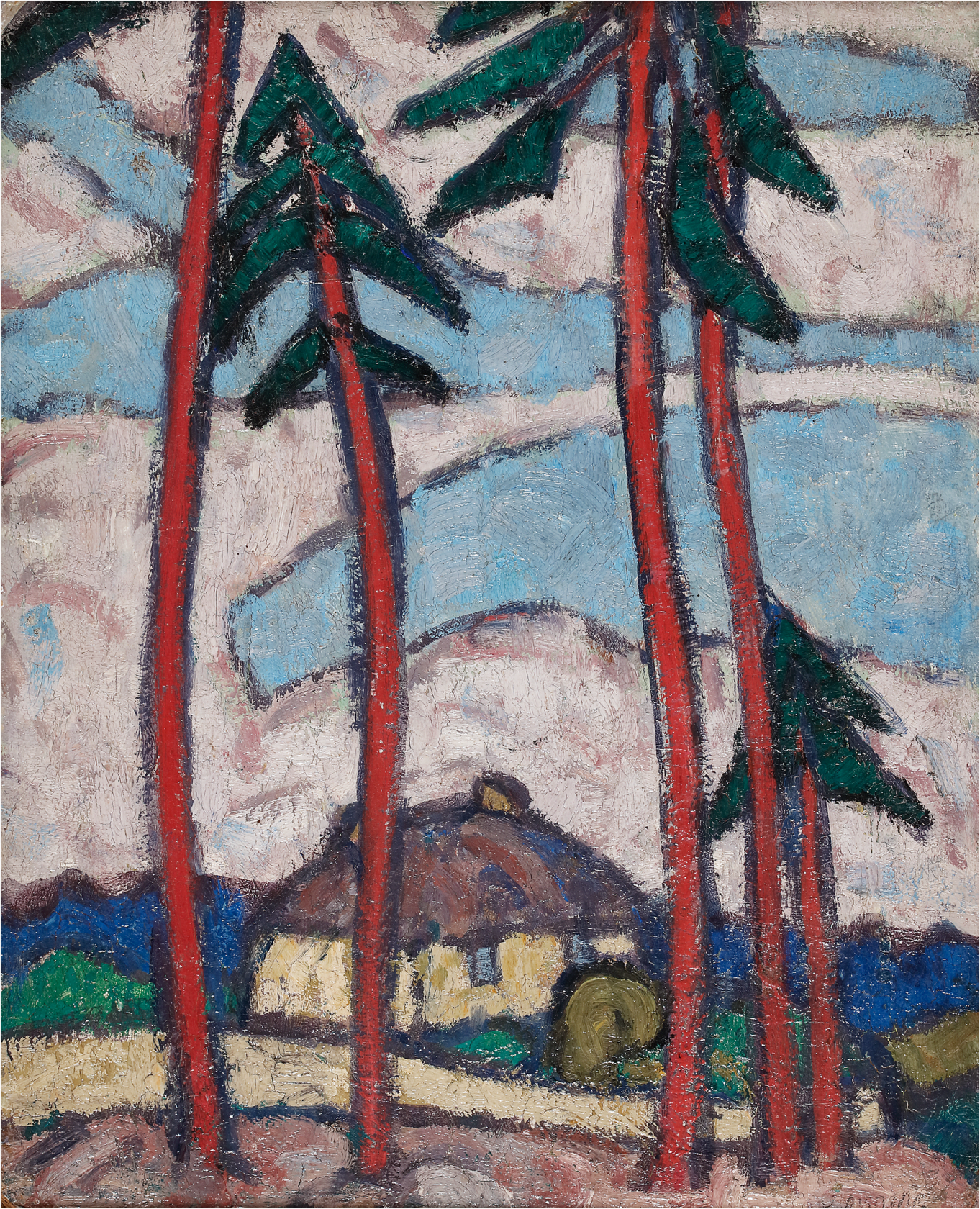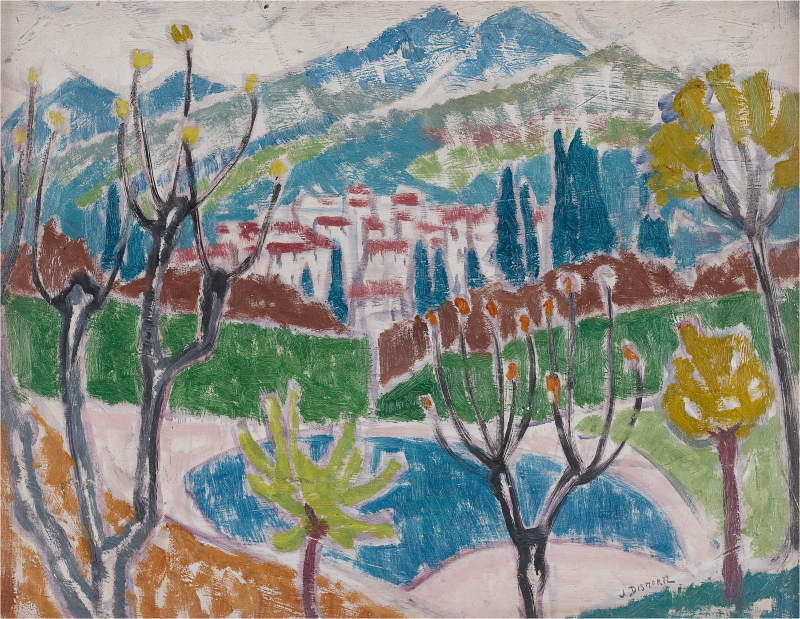To view all current artworks for sale visit philipmould.com
Jessica Dismorr was an experimental and virulent force within twentieth-century modernism in Britain. A frontrunner of British abstraction, a signatory of the radical Vorticist movement, and a politically engaged professional artist, Dismorr’s artistic imprint on British art is marked. This landscape exemplifies Dismorr’s early style, characterised by the unabashed application of bold linear strokes of paint. It was painted shortly after her 1910 artistic sojourn with American fauvist Marguerite Zorach (née Thompson) and places her at the forefront of post-impressionist experimentation.
Dismorr began her artistic training at the Slade, which was the only art school of the period that permitted women to study from the life model, as men did in other institutions. She furthered her training in France, where she studied in Étaples, at the art school run by Max Bohm, and later at the Academie de la Palette in Paris, during which time she shared a studio with...
To view all current artworks for sale visit philipmould.com
Jessica Dismorr was an experimental and virulent force within twentieth-century modernism in Britain. A frontrunner of British abstraction, a signatory of the radical Vorticist movement, and a politically engaged professional artist, Dismorr’s artistic imprint on British art is marked. This landscape exemplifies Dismorr’s early style, characterised by the unabashed application of bold linear strokes of paint. It was painted shortly after her 1910 artistic sojourn with American fauvist Marguerite Zorach (née Thompson) and places her at the forefront of post-impressionist experimentation.
Dismorr began her artistic training at the Slade, which was the only art school of the period that permitted women to study from the life model, as men did in other institutions. She furthered her training in France, where she studied in Étaples, at the art school run by Max Bohm, and later at the Academie de la Palette in Paris, during which time she shared a studio with Marguerite Zorach. In 1910, both artists travelled to Provence together visiting Avignon, Saint Rémy, Provence, Arles, Les Baux-de-Provence, and Marseille and Martigues on the coast and, given the similarities between the two artist’s work, it is likely that Dismorr painted this work shortly after this trip. Dismorr’s influence on Zorach (and vice versa) is prominent, as evidenced in this vibrant painting, which shares many compositional and stylistic similarities with Zorach’s Man among the Redwoods 1912 [fig. 1] and Landscape 1911/12 [fig. 2].
During this period Dismorr aligned herself with the Rhythm group, a group of artists influenced by the Fauvist painters, founded in 1912 by J. D. Fergusson, whom Dismorr had studied under at the Academie de la Palette. This set the artist on a trajectory for collaborative practice, and she participated in almost all of the avant-garde groups active in London between 1912 and 1937, most notably, the Vorticists whose members included Wyndham Lewis, Helen Saunders, Cuthbert Hamilton, Ezra Pound, William Roberts, Frederik Etchells, and Edward Wadsworth. Aggressively written out of the history of vorticism by the self-appointed ‘leader’, Wyndham Lewis, Dismorr’s reputation suffered since her death – however, recent revaluation of her position in art history has rightly bolstered her repute, and she is once again championed as a pioneer of modernism.













